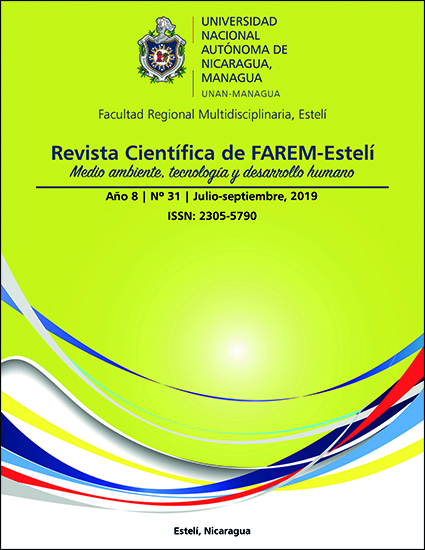Precipitation acidification process of Managua
DOI:
https://doi.org/10.5377/farem.v0i31.8472Keywords:
acid rain, air pollution, humidity deposition rateAbstract
The main objective of the research is to determine the acidity origin of the rainfall that impacts the city of Managua. Analyzing various components both physical, chemical and atmospheric movements that would impact in the characteristics of the water that precipitates. For this was carried out monitoring of five stations distributed in the city, the pH of 105 precipitation events, and analysis of Ca2+, Na+, Mg2+, NH4-, Fe+3, NO3-, SO42-, HCO3- ions were analyzed for the month of October 2018. The pH values that predominated were less than 5.6, value taken as equilibrium for rainwater acidity, the predominance acid character at 51% of events, with an average value of 4.67, maximums of 5.59 and minimum of 3.13. There is no evidence that the acidity of rainfall is influenced by atmospheric movement, nor by the intensity of events. The main ions that dominate are Ca2+>Na+, Ca2+>Mg2+, Mg2+>Ca2+, Cl-> SO42, SO42->Cl-. Pearson correlation analyses and major component analyses indicate that acid rains are strongly influenced by sources of anthropogenic contamination related to the burning of fossil fuels. It is concluded that the contaminating components are dominant over the ions with neutralizing capacity such as Ca2+, as well as the presence of the SO42 ion- indicates that it is the product of the oxidation of acids product of the buoyancy of conlieutenants emitted by diffuse and timely sources typical of city activities around the world.

